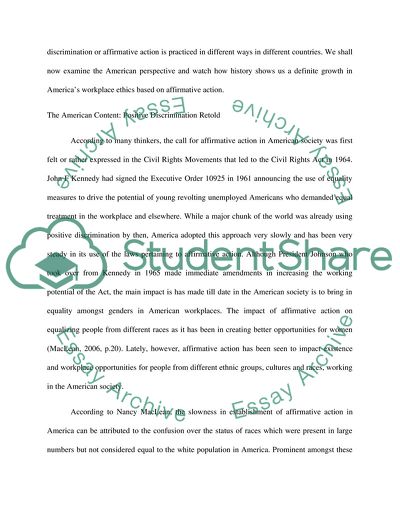Cite this document
(Affirmative Action in America Essay Example | Topics and Well Written Essays - 1750 words, n.d.)
Affirmative Action in America Essay Example | Topics and Well Written Essays - 1750 words. https://studentshare.org/politics/1871619-major-labor-and-employment-issuesaffirmative-action
Affirmative Action in America Essay Example | Topics and Well Written Essays - 1750 words. https://studentshare.org/politics/1871619-major-labor-and-employment-issuesaffirmative-action
(Affirmative Action in America Essay Example | Topics and Well Written Essays - 1750 Words)
Affirmative Action in America Essay Example | Topics and Well Written Essays - 1750 Words. https://studentshare.org/politics/1871619-major-labor-and-employment-issuesaffirmative-action.
Affirmative Action in America Essay Example | Topics and Well Written Essays - 1750 Words. https://studentshare.org/politics/1871619-major-labor-and-employment-issuesaffirmative-action.
“Affirmative Action in America Essay Example | Topics and Well Written Essays - 1750 Words”. https://studentshare.org/politics/1871619-major-labor-and-employment-issuesaffirmative-action.


